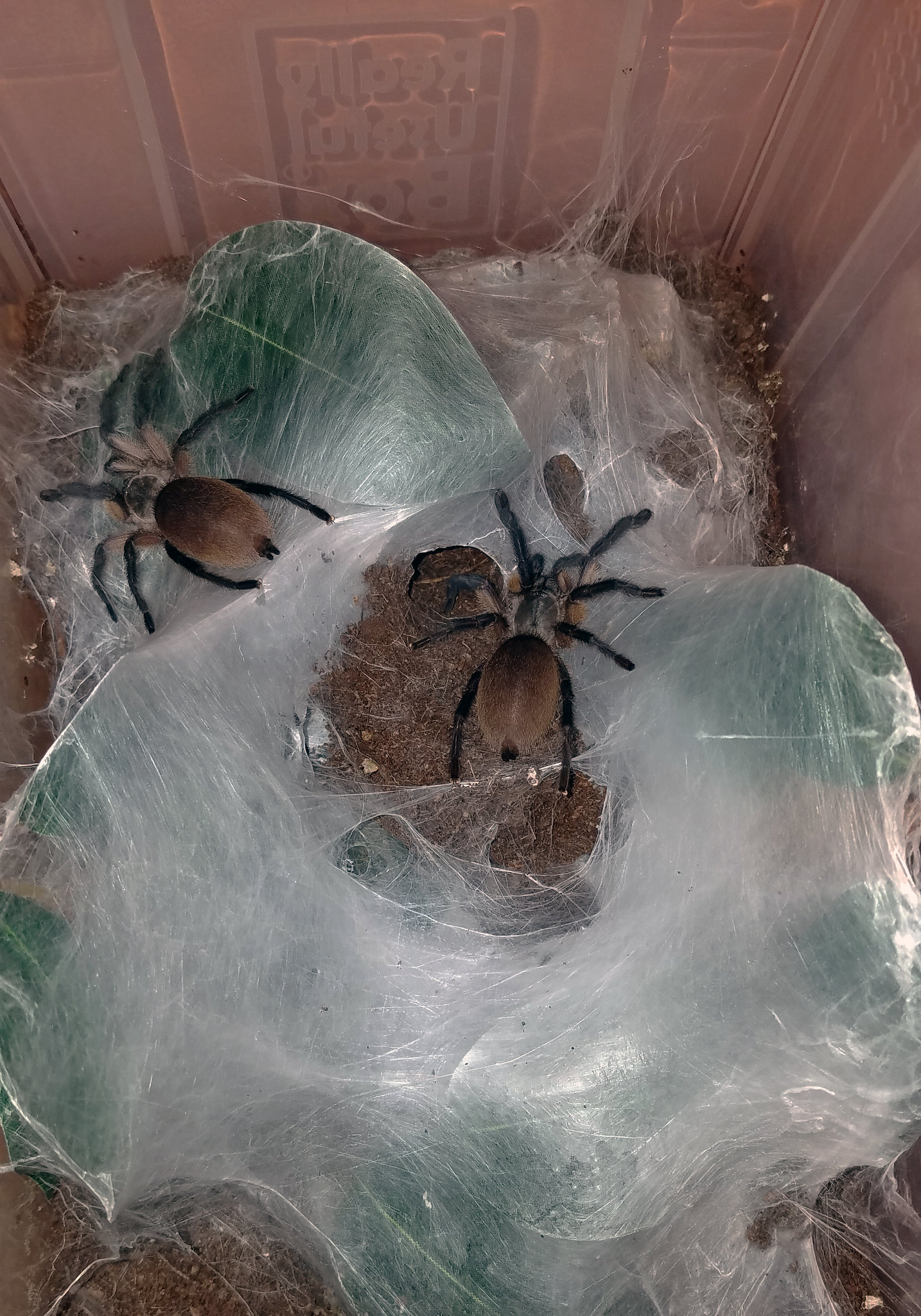Ciri
Arachnopeon
- Joined
- Dec 5, 2015
- Messages
- 1
This is an interesting topic, for me the NW's urticating hairs (with some exception i.e. my fossorial sp. P. sazimai) are too much and 8/11 of my species are Old Worlds - P. metallica, 2x 8" P. rufilata, AF H. maculata, M. balfouri to name a few of what I keep.
As someone who started on the opposite spectrum, beginning with the OW obligate burrower C. lividus - rehousing is best done slowly and meticulously, as @Trenor mentioned with ample work space. The best thing you can think of is the worst case scenario - that at any moment the T will bolt on you.
However, if there is one universal tip I've used with all of my larger specimens as well as on slings - invest in a very soft, small paint brush which you can gently stroke the specimen. This works not only to get a reaction; which gives insight into it's disposition, but when rehousing my largest old worlds a paint brush is gentle enough to "coax" them out without issue.
Using the method of a paint brush, gently stroking the T I have never had one bolt on me, and they calmly move into the old enclosure directly into the new one given time.
I hope this helps! From my experience OW T's can be lightning fast with their feeding response, but always remember in the event of a threat their behaviour is to retreat rather than strike if they are given the option to hoof it back to their silk cocoon.
P.S. I forgot to mention that at least with my 8" Poecilotheria rufilata, I have attempted a rehouse but instead waited for a better day as she was being uncooperative. So I guess what I'm trying to get at is sometimes patience is key with OW specimens.
As someone who started on the opposite spectrum, beginning with the OW obligate burrower C. lividus - rehousing is best done slowly and meticulously, as @Trenor mentioned with ample work space. The best thing you can think of is the worst case scenario - that at any moment the T will bolt on you.
However, if there is one universal tip I've used with all of my larger specimens as well as on slings - invest in a very soft, small paint brush which you can gently stroke the specimen. This works not only to get a reaction; which gives insight into it's disposition, but when rehousing my largest old worlds a paint brush is gentle enough to "coax" them out without issue.
Using the method of a paint brush, gently stroking the T I have never had one bolt on me, and they calmly move into the old enclosure directly into the new one given time.
I hope this helps! From my experience OW T's can be lightning fast with their feeding response, but always remember in the event of a threat their behaviour is to retreat rather than strike if they are given the option to hoof it back to their silk cocoon.
P.S. I forgot to mention that at least with my 8" Poecilotheria rufilata, I have attempted a rehouse but instead waited for a better day as she was being uncooperative. So I guess what I'm trying to get at is sometimes patience is key with OW specimens.


